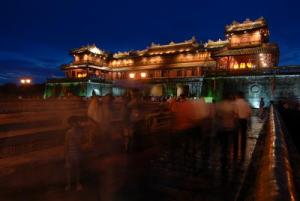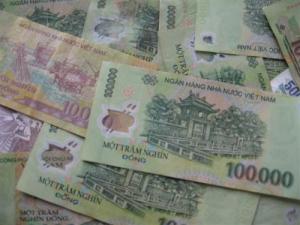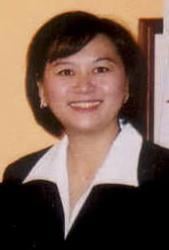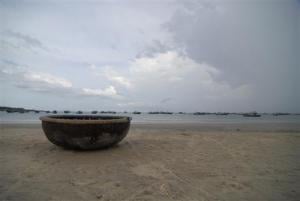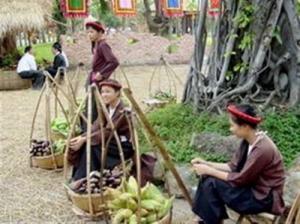Loc Yen Village: Natural Art
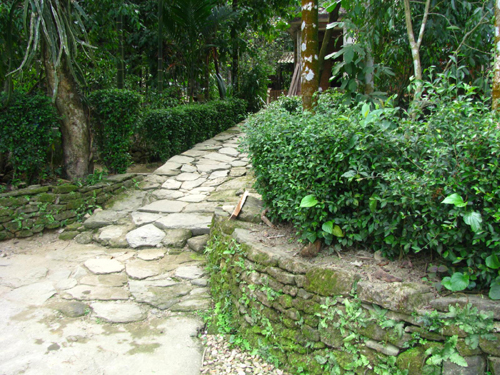
Located in Tien Canh Commune, Tien Phuoc District, 35 kilometers west of Tam Ky Town, Loc Yen Village is said to resemble a “giant installation art piece,” a rare, perfect blend of all its elements: landscape, weather, buildings, and people's lifestyle.
The Central Vietnam village is blessed enough to have an abundance of banana and pepper trees, terrace fields, shady stone paths and rocky cliffs. Except for its traditional wooden houses (called ruong), the whole area is mostly built on stone (but without any mortar). But being a century old, these stone buildings are now covered with moss which, on the brighter side, provide coolness in the heat of the summer.
The grandeur and history of the structures retain their beauty despite the passing of time. There are 150-year old stone wells which, although mossy now too through time, have never gone dry and provide cool water in the summer and warm water during winter.But more than its structures, what's most interesting about Loc Yen Village is its people, who saw the natural architecture of their environment and, through nature-given artistry and skills too, used this blessing to build a one-of-a-kind living space entirely suitable for them.
Thus, not only are their structures functional, they are decorative as well, creating a harmonious blend of both nature and artificial.Loc Yen residents not only appreciate but actually take concrete steps in taking care of their village. When a building starts to show signs of dilapidation, the local people quickly repair and restore the structure to its original condition. The 1.2-meter high stone fences were built not only to separate houses, but most of all to shield the village and fields in case of landslides. Through time, its stone walls have saved the village from war and wild animals.There are four types of houses in Loc Yen, each style serving a purpose. The first was commonly used even before 1940, a cottage-type house with two roofs, one strategically placed inside and made of bamboo and soil to keep the house cool. The double-tiled houses were built at a time when the people's financial status improved, thus the walls made of stone, clay and jackfruit wood. The third type of house was newly-built with a modern design; while the fourth type, the Ruong houses, were owned by the wealthiest class in the society.Originally built more than a century ago by skilled carpenters from Van Ha, ruong houses have three rooms and two lean-tos. Their front view is a deep stone valley, while they have a majestic view of the mountain at the back of the house.
The pillars of the house are engraved with flowers and leaves in celebration and gratitude to nature. Though the house is simple in general, it has the appearance and feel of a villa because of its breathtaking view and ornate designs.Unfortunately though, the war in 1975 destroyed most of these structures, with only 10 ruong houses left all over the village. The once-rich owners are now poor farmers who only have enough to sustain their families' needs. But as the residents are protective of their ancestry, these remaining houses are still in good condition.
The 160-year old ruong house owned by Nguyen Dinh Hoan is the most beautiful of all, and the province specifically invested almost VND200 million to restore the strusture to its initial condition.At present, Loc Yen is being developed into an ecotourism site to encourage its villagers to better their livelihood and avoid selling the historical houses as what is happening today. Kinh, a member of the Vietnam Council of Heritage, believes that Loc Yen surpasses its two famous counterparts – Phuoc Tich, Thua Thien, Hue Province and Duong Lam in Hanoi – in terms of cultural and tourism factors. Loc Yen is able to balance nature with its man-made structures. But Kinh further stressed that more than the financial gain that will come from promoting the village through tourism, the balance between preserving the natural beauty of the environment and the natural way of living and welfare of the local residents, should be the focal point in Loc Yen Village.





